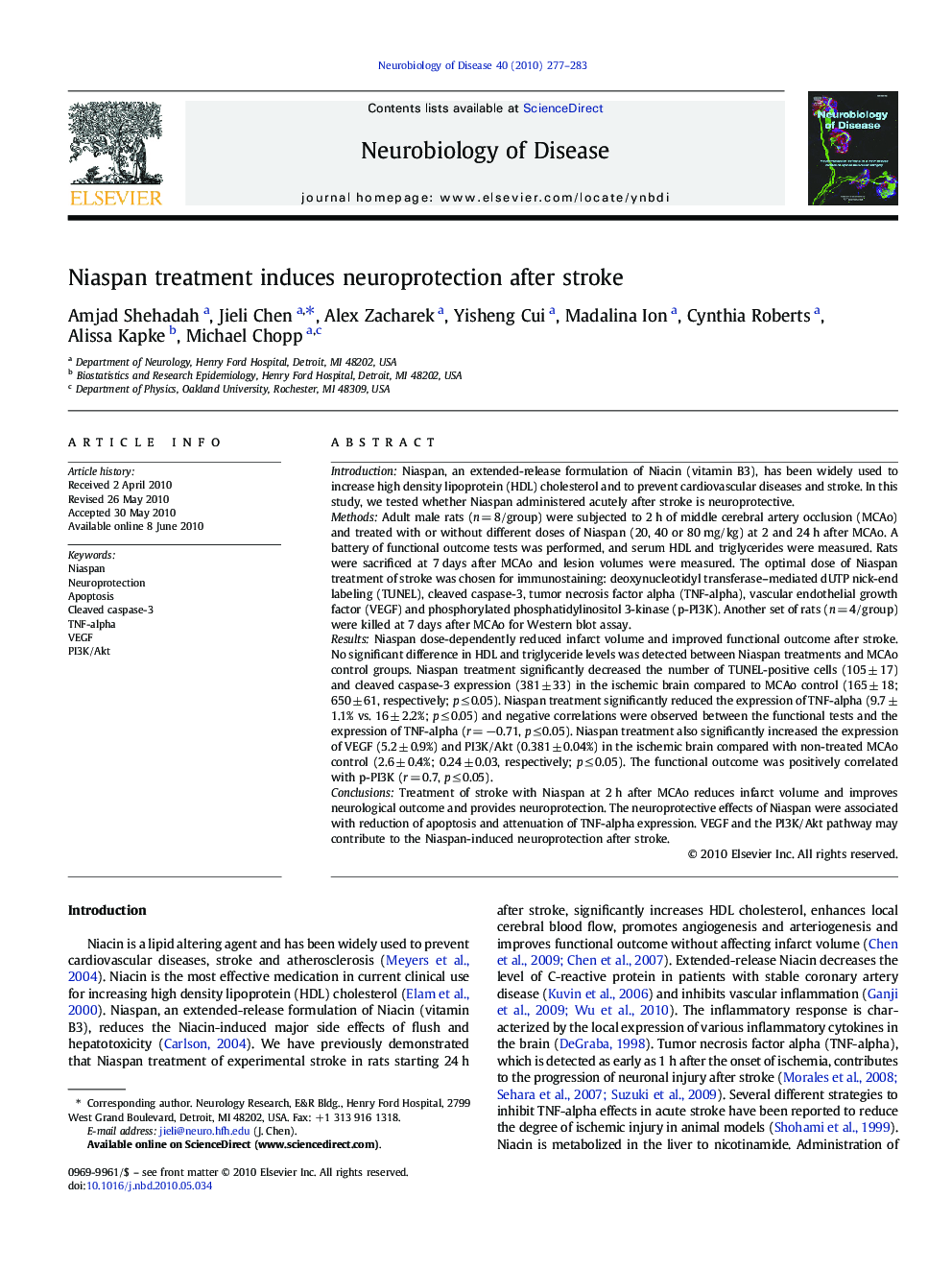| کد مقاله | کد نشریه | سال انتشار | مقاله انگلیسی | نسخه تمام متن |
|---|---|---|---|---|
| 3069851 | 1580702 | 2010 | 7 صفحه PDF | دانلود رایگان |

IntroductionNiaspan, an extended-release formulation of Niacin (vitamin B3), has been widely used to increase high density lipoprotein (HDL) cholesterol and to prevent cardiovascular diseases and stroke. In this study, we tested whether Niaspan administered acutely after stroke is neuroprotective.MethodsAdult male rats (n = 8/group) were subjected to 2 h of middle cerebral artery occlusion (MCAo) and treated with or without different doses of Niaspan (20, 40 or 80 mg/kg) at 2 and 24 h after MCAo. A battery of functional outcome tests was performed, and serum HDL and triglycerides were measured. Rats were sacrificed at 7 days after MCAo and lesion volumes were measured. The optimal dose of Niaspan treatment of stroke was chosen for immunostaining: deoxynucleotidyl transferase–mediated dUTP nick-end labeling (TUNEL), cleaved caspase-3, tumor necrosis factor alpha (TNF-alpha), vascular endothelial growth factor (VEGF) and phosphorylated phosphatidylinositol 3-kinase (p-PI3K). Another set of rats (n = 4/group) were killed at 7 days after MCAo for Western blot assay.ResultsNiaspan dose-dependently reduced infarct volume and improved functional outcome after stroke. No significant difference in HDL and triglyceride levels was detected between Niaspan treatments and MCAo control groups. Niaspan treatment significantly decreased the number of TUNEL-positive cells (105 ± 17) and cleaved caspase-3 expression (381 ± 33) in the ischemic brain compared to MCAo control (165 ± 18; 650 ± 61, respectively; p ≤ 0.05). Niaspan treatment significantly reduced the expression of TNF-alpha (9.7 ± 1.1% vs. 16 ± 2.2%; p ≤ 0.05) and negative correlations were observed between the functional tests and the expression of TNF-alpha (r = −0.71, p ≤ 0.05). Niaspan treatment also significantly increased the expression of VEGF (5.2 ± 0.9%) and PI3K/Akt (0.381 ± 0.04%) in the ischemic brain compared with non-treated MCAo control (2.6 ± 0.4%; 0.24 ± 0.03, respectively; p ≤ 0.05). The functional outcome was positively correlated with p-PI3K (r = 0.7, p ≤ 0.05).ConclusionsTreatment of stroke with Niaspan at 2 h after MCAo reduces infarct volume and improves neurological outcome and provides neuroprotection. The neuroprotective effects of Niaspan were associated with reduction of apoptosis and attenuation of TNF-alpha expression. VEGF and the PI3K/Akt pathway may contribute to the Niaspan-induced neuroprotection after stroke.
Journal: Neurobiology of Disease - Volume 40, Issue 1, October 2010, Pages 277–283